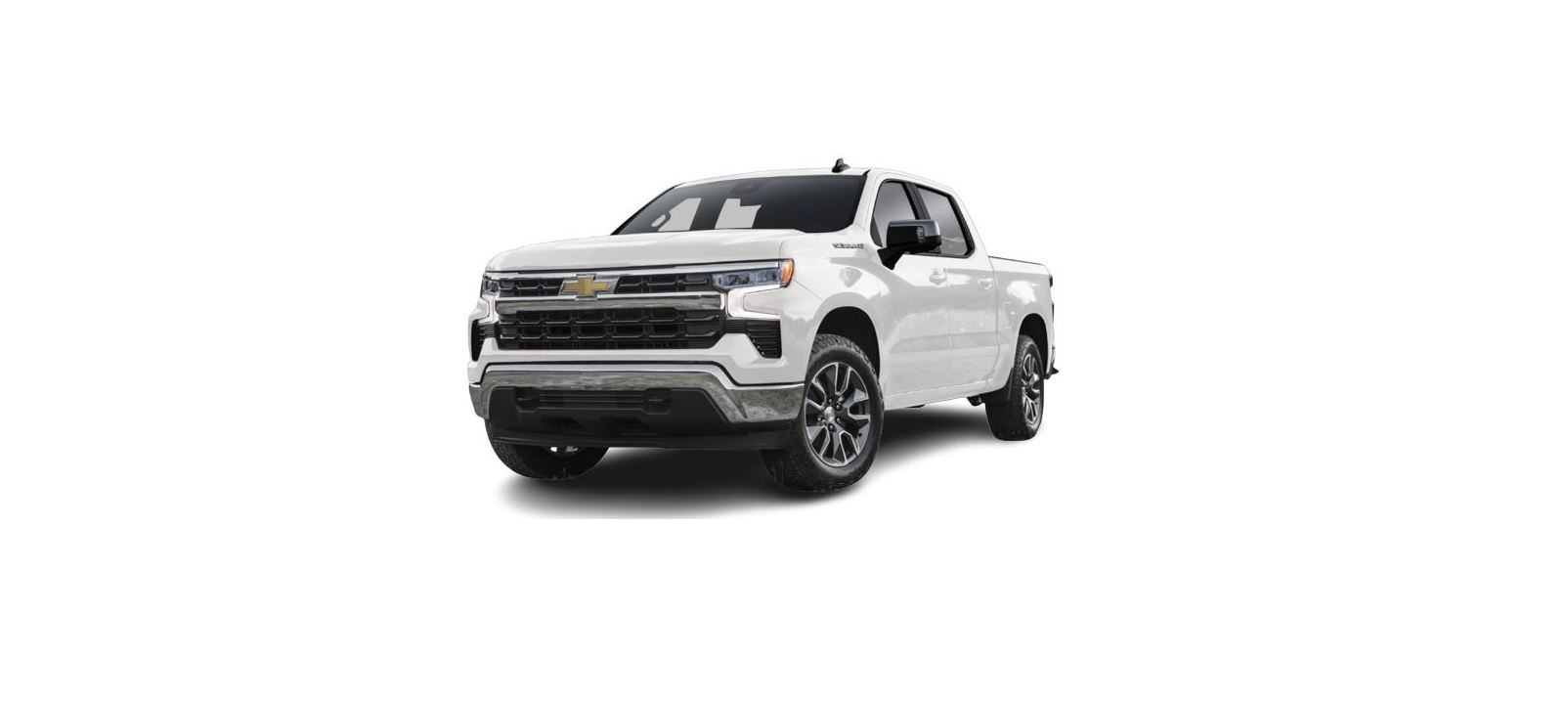2022 Chevrolet Silverado 1500 Warning Lights, Gauges, and Indicators
Warning Lights, Gauges, and Indicators
Warning lights and gauges can signal that something is wrong before it becomes serious enough to cause an expensive repair or replacement. Paying attention to the warning lights and gauges could prevent injury.
Some warning lights come on briefly when the engine is started to indicate they are working. When one of the warning lights comes on and stays on while driving, or when one of the gauges shows there may be a problem, check the section that explains what to do. Waiting to do repairs can be costly and even dangerous.
Instrument Cluster (Base Level)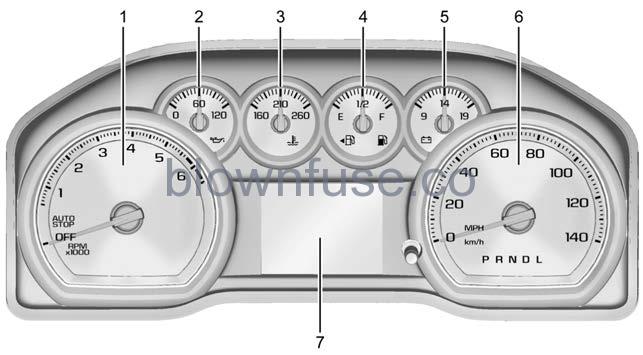
- Tachometer 108
- Engine Oil Pressure Gauge 109
- Engine Coolant Temperature Gauge 110
- Fuel Gauge 108
- Voltmeter Gauge 111
- Speedometer 108
- Driver Information Center (DIC) (Base Level) 0 123 or
- Driver Information Center (DIC) (Uplevel) 0 125
Instrument Cluster (Uplevel)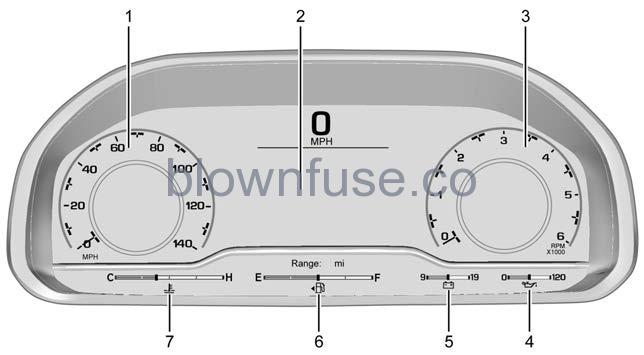
- Speedometer 0 108
- Driver Information Center (DIC) (Base Level) 0 123 or
- Driver Information Center (DIC) (Uplevel) 0 125
- Tachometer 0 108
- Engine Oil Pressure Gauge 0 109
- Voltmeter Gauge 0 111
- Transmission Temperature Gauge (Uplevel only) 0 111
- Fuel Gauge 0 108
- Engine Coolant Temperature Gauge 110
Reconfigurable Instrument Cluster
The instrument cluster layout can be changed. There are four display configurations to choose from Classic, Progressive, Digital, and Clean. The Classic, Progressive, and Digital, layouts may also be configured with one, two, or four gauges. See “Lower Gauges” under “Options.” The Clean layout will only display the fuel gauge. Use the steering wheel control to move between the different display zones and scroll through the different displays. See “Display Layout” under “Options.”
- The Classic configuration displays a larger speedometer and tachometer on the far left and right sides of the display. There are info display areas inside of the speedometer and tachometer. The DIC area is located in the center of the display.
- The progressive configuration displays a smaller speedometer and tachometer on the far left and right sides of the display. There are info display areas inside of the speedometer and tachometer. The DIC area is larger and located in the center of the display
- Digital configuration displays the info display areas on the far left and right sides of the display. The DIC area is larger and located in the center of the display.
- Clean configuration is a simplified display that has a digital speed in the center. The DIC area is located on the far right of the display.
Cluster Menu
There are interactive display areas in the instrument cluster. Locations vary by the selected display layout Use the right steering wheel control to open and scroll through the different items and displays.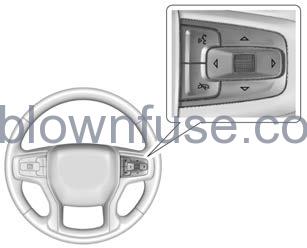
Press o or p to access the instrument cluster applications. Use the thumbwheel to scroll through the list of available applications. Press the thumbwheel to select. Not all applications or features are available on all vehicles
- Info App. This is where the selected Driver Information Center (DIC) displays can be viewed. See Driver Information Center (DIC) (Base Level) 0 123 or Driver Information Center (DIC) (Uplevel) 125.
- Audio
- Navigation
- Phone
- Options.
Left/Right Side Info
The information displayed here can be customized from the Options menu. See “Options” below.
- Compass: If equipped, shows the direction the vehicle is heading. This info is the default option for the left side.
- Time & Outside Temperature: Displays the current time and outside air temperature
- Tire Pressure: This shows the approximate pressures of all four tires. Tire pressure is displayed in either kilopascal (kPa) or in pounds per square inch (psi). If the pressure is low, the value for that tire is shown in amber.
- Average Fuel Economy: Displays average fuel economy, the best fuel economy over the selected distance, and a bar graph showing instantaneous fuel economy Press the thumbwheel to change the selected distance. Press and hold the thumbwheel while this display is active to reset the best fuel economy and average fuel economy. This display can also be reset by selecting reset in the menu
- Transmission Fluid Temperature: This shows the temperature of the automatic transmission fluid in either degrees Celsius (°C) or degrees Fahrenheit (°F).
- Drive Mode: Displays the state of the drive mode, ride height, and transfer case. This info is only available as a right-side option and is the default selection for the right side.
- None: Displays the info area as empty.
Audio
Browse music, select from the favorites or change the audio source. Use the thumbwheel to change the station or go to the next or previous track.
Navigation
If there is an active route, the Turn-by-Turn directions will appear on the Navigation Page, if there is no active route a compass will be displayed.
Phone
If there is no active phone call, view recent calls, or scroll through contacts. During an active call, mute the phone or switch to handset operation.
Options
Use the thumbwheel to scroll through items in the Options menu.
- Display Layout: Choose Classic, Progressive, Digital, and Clean layout by pressing the thumbwheel while the desired item is highlighted. Exit the Layout menu by pressing o.
- Left/Right Side Info: Press the thumbwheel to select the items to be displayed in the display areas. See “Left/Right Side Info” previously in this section.
- Lower Gauges: Choose one of three gauge configurations by pressing the thumbwheel while the desired item is highlighted. The selected configuration will be displayed at the bottom of the display. Maximum displays fuel level, coolant temperature, engine oil pressure, and battery voltage. Transmission fluid temperature displays instead of battery voltage while in Tow Haul mode. Medium displays fuel level, and coolant temperature. Minimum displays only the fuel level.
- Info Page Options: Press the thumbwheel to select the items to be displayed in the Info app. See Driver Information Center (DIC) (Base Level) 0 123 or Driver Information Center (DIC) (Uplevel) 125.
- Units: Choose US or metric units by pressing the thumbwheel while the desired item is highlighted
- Speed Warning: This allows the driver to set a speed that they do not want to exceed. To set the Speed Warning press the thumbwheel when Speed Warning is displayed. Use the thumbwheel to adjust the value and press to set the speed. Once the speed is set, this feature can be turned off by pressing the thumbwheel while viewing this page. If the selected speed limit is exceeded, a pop-up warning is displayed with a chime.
- Speed Sign: Shows sign information, which comes from a roadway database in the onboard navigation system, if equipped. The sign will show “− −” when offline maps are unavailable. See Maps 0 165.
- Head-up Display (HUD): If equipped, this feature allows for adjusting the angle of the HUD image and changing or turning off the Speed Limit Sign.
- HUD Rotation: Press the thumbwheel while Adjust Rotation is highlighted to enter Adjust Mode. Scroll to adjust the angle of the HUD display. Press the thumbwheel to confirm and save the setting. This feature may only be available in P (Park).
- Speed Limit Style: Press the thumbwheel while Speed Limit Style is highlighted to change the speed sign style or to turn it off.
- Software Information: Displays open source software information.
- Reset To Defaults: This allows the driver to reset to default settings.
Speedometer
The speedometer shows the vehicle speed in either a kilometer per hour (km/h) or miles per hour (mph).
Odometer
The odometer shows how far the vehicle has been driven, in either kilometers or miles.
Trip Odometer
The trip odometer shows how far the vehicle has been driven since the trip odometer was last reset The trip odometer is accessed and reset through the Driver Information Center (DIC). See Driver Information Center (DIC) (Base Level) 0 123 or Driver Information Center (DIC) (Uplevel) 0 125.
Tachometer
The tachometer displays the engine speed in revolutions per minute (rpm). For vehicles with the Stop/Start system, when the ignition is on, the tachometer indicates the vehicle status. When pointing to AUTO STOP, the engine is off but the vehicle is on and can move. The engine could auto-start at any time. When the indicator points to OFF, the vehicle is off. When the engine is on, the tachometer will indicate the rpm. The tachometer may vary by several hundred rpm, during Auto Stop mode, when the engine is shutting off and restarting.
Fuel Gauge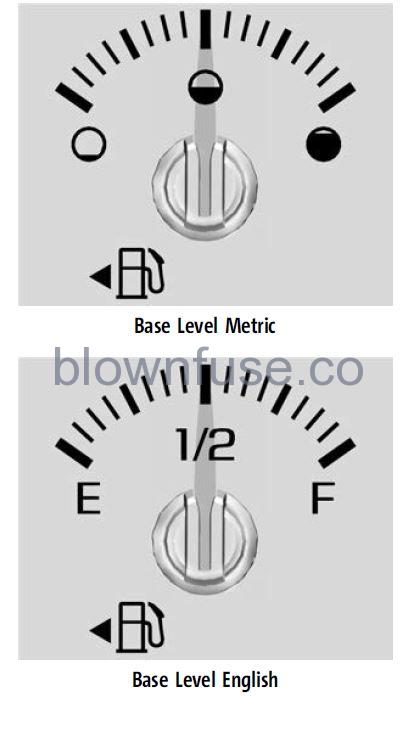
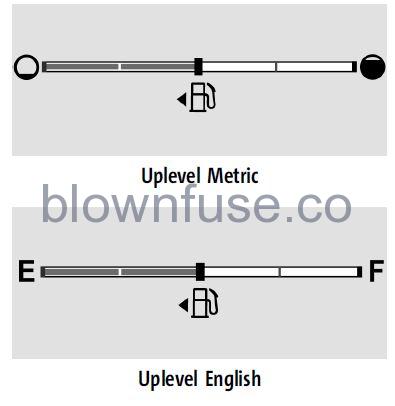
When the ignition is on, the fuel gauge indicates the approximate amount of fuel left in the tank. There is an arrow near the fuel gauge pointing to the side of the vehicle the fuel door is on. When the indicator nears empty, the low fuel light comes on. There still is a little fuel left, but the vehicle should be refueled soon.
The fuel gauge may
- Take a little more, or less fuel to fill up than it indicates. For example, the gauge may have indicated the tank is half full, but it actually takes a little more, or less than half the tank’s capacity to fill the tank.
- Moves a little while turning a corner, speeding up, or braking.
- Takes a few seconds to stabilize after the ignition is turned on and goes back to empty when the ignition is turned off.
These are normal conditions, none of which indicate a problem with the fuel gauge.
Fuel Range
The uplevel instrument cluster has an estimated fuel range located in the bottom center of the display. The fuel range is displayed with the approximate distance the vehicle can be driven without refueling. The fuel range estimate is based on an average of the vehicle’s fuel economy over recent driving history and the amount of fuel remaining in the fuel tank. When the estimated fuel range is low, the range shows LOW and a message may also display in the Driver Information Center (DIC).
Engine Oil Pressure Gauge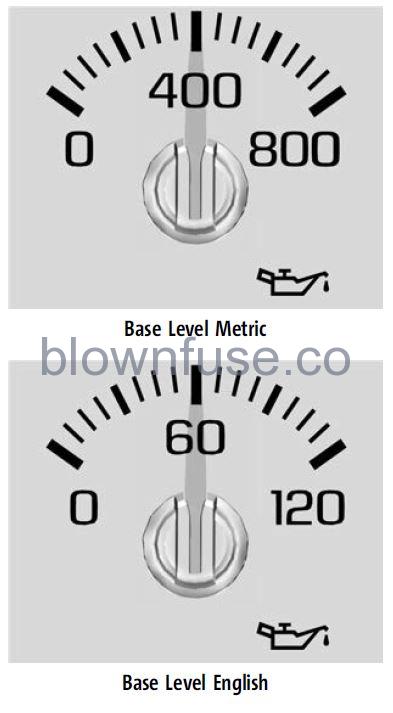
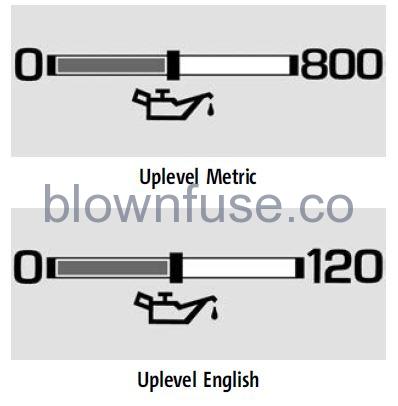
- The engine oil pressure gauge shows the engine oil pressure in kPa (kilopascals) or psi (pounds per square inch) when the engine is running.
- Oil pressure can vary with engine speed, outside temperature, coolant temperature, and oil viscosity.
- On some models, the oil pump will vary engine oil pressure according to engine needs. Oil pressure may change quickly as the engine speed or load varies. This is normal. If the oil pressure warning light or
- Driver Information Center (DIC) message indicates oil pressure outside the normal operating range, check the vehicle’s oil as soon as possible.
- See Engine Oil 344.
Caution
Lack of proper engine oil maintenance can damage the engine. Driving with the engine oil low can also damage the engine. The repairs would not be covered by the vehicle warranty. Check the oil level as soon as possible. Add oil if required, but if the oil level is within the operating range and the oil pressure is still low, have the vehicle serviced. Always follow the maintenance schedule for changing engine oil.
If the vehicle has a diesel engine, see the Duramax diesel supplement.
Engine Coolant Temperature Gauge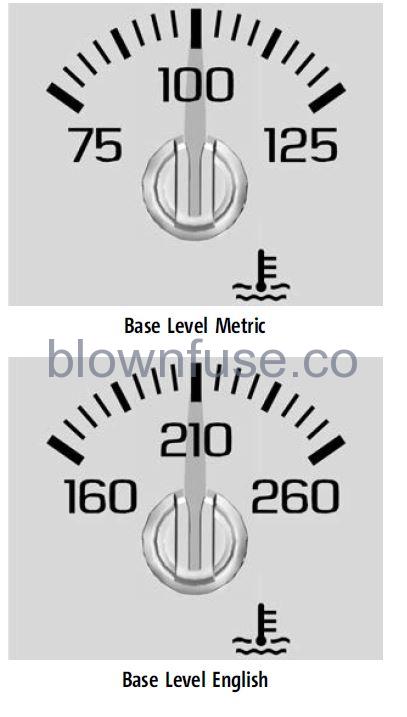
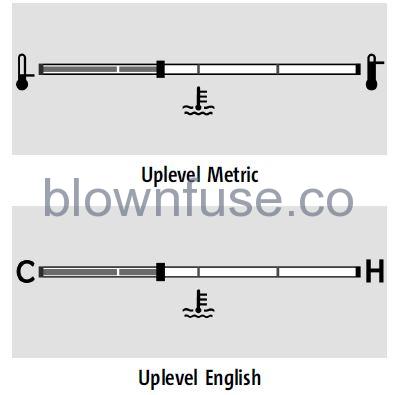
- This gauge measures the temperature of the vehicle’s engine coolant.
- While driving under normal operating conditions, if the needle moves into the red warning area, the engine is too hot. Pull off the road, stop the vehicle, and turn off the engine as soon as possible
Transmission Temperature Gauge (Uplevel only)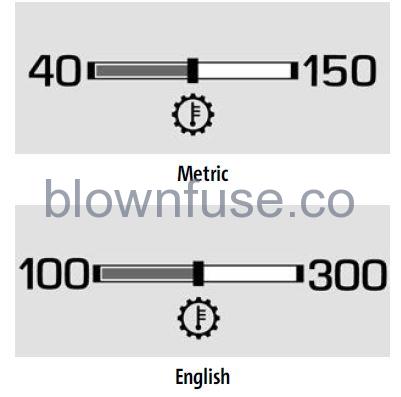
This gauge displays while the vehicle is in the Tow/Haul driver mod, and the lower gauges are configured to display four gauges. The transmission fluid temperature is also selectable as Left/Right side info. To change gauge configurations, see “Options” under Instrument Cluster (Base Level) 0 104 or Instrument Cluster (Uplevel) 0 105. The transmission temperature gauge shows the transmission fluid temperature. If the gauge is reading in the red area and/or a message appears in the Driver Information Center (DIC), the vehicle must be stopped and the cause checked. One possible cause is a low fluid level in the transmission.
Caution
Do not drive the vehicle while the transmission fluid is overheating, or the transmission can be damaged. This could lead to costly repairs that would not be covered by the warranty.
Voltmeter Gauge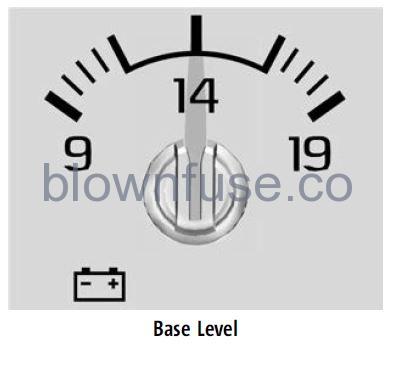
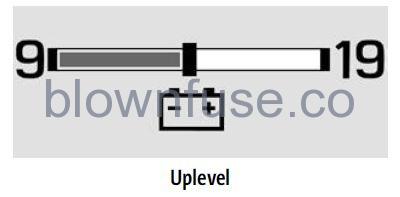
- When the ignition is on, this gauge indicates the battery voltage.
- When the engine is running, this gauge shows the condition of the charging system.
- The gauge can transition from a higher to lower or a lower to higher reading. This is normal. If the vehicle is operating outside the normal operating range, the charging system light comes on. See Charging System Light 0 114. The voltmeter gauge may also read lower when in fuel economy mode. This is normal.
- Readings outside the normal operating range can also occur when a large number of electrical accessories are operating in the vehicle and the engine is left idling for an extended period. This condition is normal since the charging system is not able to provide full power at the engine idle. As engine speeds are increased, this condition should correct itself as higher engine speeds allow the charging system to create maximum power.
- The vehicle can only be driven for a short time with the readings outside the normal operating range. If the vehicle must be driven, turn off all accessories, such as the radio and air conditioner. Readings outside the normal operating range indicate a possible problem in the electrical system. Have the vehicle serviced as soon as possible.
Seat Belt Reminders
Driver Seat Belt Reminder Light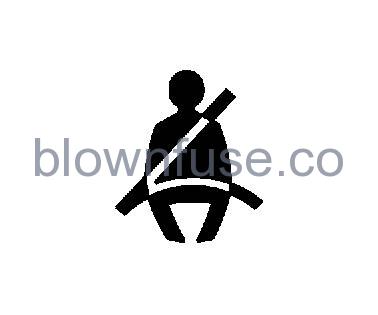
There is a driver seat belt reminder light on the instrument cluster When the vehicle is started, this light flashes, and a chime may come on to remind the driver to fasten their seat belt. Then the light stays on solid until the belt is buckled. This cycle may continue several times if the driver remains or becomes unbuckled while the vehicle is moving. If the driver seat belt is buckled, neither the light nor the chime comes on.
Front Passenger Seat Belt Reminder Light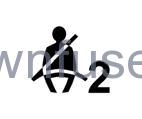
The vehicle may have a front passenger seat belt reminder light near the passenger airbag status indicator. See Passenger Sensing System 0 63. When the vehicle is started, this light flashes and a chime may come on to remind passengers to fasten their seat belts. Then the light stays on solid until the belt is buckled. This cycle continues several times if the front passenger remains or becomes unbuckled while the vehicle is moving. If the front passenger seat belt is buckled, neither the chime nor the light comes on. The front passenger seat belt reminder light and chime may come on if an object is put on the seat such as a briefcase, handbag, grocery bag, laptop, or another electronic device. To turn off the reminder light and/or chime, remove the object from the seat or buckle the seat belt.
Airbag Readiness Light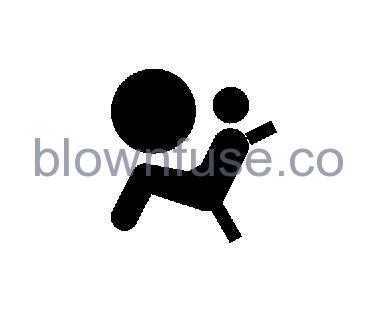
This light shows if there is an electrical problem with the airbag system. It is located in the instrument cluster. The system check includes the airbag sensor(s), the passenger sensing system, the pretensioners, the airbag modules, the wiring, and the crash sensing and diagnostic module. For more information on the airbag system, see Airbag System 0 58. The airbag readiness light comes on for several seconds when the vehicle is started. If the light does not come on then, have it fixed immediately.
Warning
If the airbag readiness light stays on after the vehicle is started or comes on while driving, it means the airbag system might not be working properly. The airbags in the vehicle might not inflate in a crash, or they could even inflate without a crash. To help avoid injury, have the vehicle serviced right away.
If there is a problem with the airbag system, a Driver Information Center (DIC) message may also come on.
Passenger Airbag Status Indicator
The vehicle has a passenger sensing system. See Passenger Sensing System 0 63 for important safety information. The overhead console has a passenger airbag status indicator.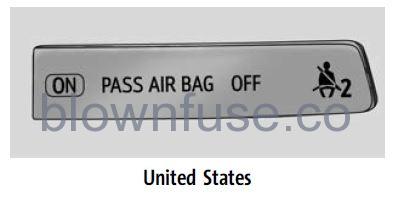
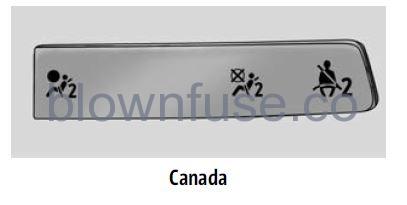
- When the vehicle is started, the passenger airbag status indicator will light ON and OFF, or the symbols for on and off, for several seconds as a system check. Then, after several more seconds, the status indicator will light either ON or OFF, or either the on or off symbol, to let you know the status of the front outboard passenger frontal airbag.
- If the word ON, or the on symbol, is lit on the passenger airbag status indicator, it means that the front outboard passenger frontal airbag is allowed to inflate.
- If the word OFF, or the off symbol, is lit on the passenger airbag status indicator, it means that the passenger sensing system has turned off the front outboard passenger frontal airbag.
- If, after several seconds, both status indicator lights remain on, or if there are no lights at all, or if the airbag readiness light is on, there may be a problem with the lights or the passenger sensing system. See your dealer for service right away.
Warning
If the airbag readiness light ever comes on and stays on, it means that something may be wrong with the airbag system. To help avoid injury to yourself or others, have the vehicle serviced right away. See Airbag Readiness Light 0 113 for more information, including important safety information.
Charging System Light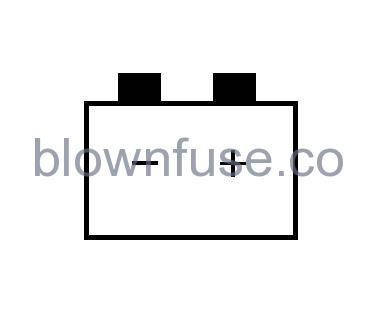
The charging system light comes on briefly when the ignition is turned on, but the engine is not running, as a check to show the light is working. It should go out when the engine is started
- If the light stays on or comes on while driving, there may be a problem with the electrical charging system. Has it been checked by your dealer? Driving while this light is on could drain the battery.
- When this light comes on or is flashing, the Driver Information Center (DIC) also displays a message.
- If a short distance must be driven with the light on, be sure to turn off all accessories, such as the radio and air conditioner. Find a safe place to stop the vehicle
Malfunction Indicator Lamp (Check Engine Light)
This light is part of the vehicle’s emission control on-board diagnostic system. If this light is on while the engine is running, a malfunction has been detected and the vehicle may require service. The light should come on to show that it is working when the ignition is on and the engine is not running. See Ignition Positions 0 217.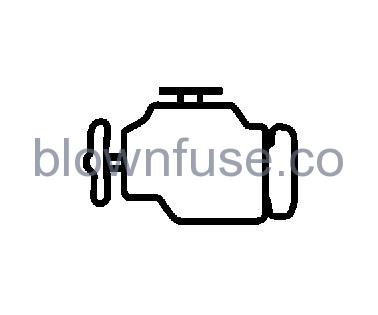
Malfunctions are often indicated by the system before any problem is noticeable. Being aware of the light and seeking service promptly when it comes on may prevent damage.
Caution
If the vehicle is driven continually with this light on, the emission control system may not work as well, the fuel economy may be lower, and the vehicle may not run smoothly. This could lead to costly repairs that might not be covered by the vehicle warranty.
Caution
Modifications to the engine, transmission, exhaust, intake, or fuel system, or the use of replacement tires that do not meet the original tire specifications, can cause this light to come on. This could lead to costly repairs not covered by the vehicle warranty. This could also affect the vehicle’s ability to pass an Emissions Inspection/Maintenance test. See Accessories and Modifications 0 338.
- If the light is flashing: A malfunction has been detected that could damage the emission control system and increase vehicle emissions. Diagnosis and service may be required.
- To help prevent damage, reduce vehicle speed and avoid hard accelerations and uphill grades. If towing a trailer, reduce the amount of cargo being hauled as soon as possible.
- If the light continues to flash, find a safe place to park. Turn the vehicle off and wait at least 10 seconds before restarting the engine. If the light is still flashing, follow the previous guidelines and see your dealer for service as soon as possible.
- If the light is on steady: A malfunction has been detected. Diagnosis and service may be required.
Check the following
- If fuel has been added to the vehicle using the capless funnel adapter, make sure that it has been removed. See “Filling the Tank with a Portable Gas Can” under Filling the Tank (Pickup Model) 0 302 or Filling the Tank (Chassis Cab Model) 303. The diagnostic system can detect if the adapter has been left installed in the vehicle, allowing fuel to evaporate into the atmosphere. A few driving trips with the adapter removed may turn off the light.
- Poor fuel quality can cause inefficient engine operation and poor driveability, which may go away once the engine is warmed up. If this occurs, change the fuel brand. It may require at least one full tank of the proper fuel to turn the light off. See Recommended Fuel (6.2L V8 Engine) 0 301 or Recommended Fuel (2.7L L4 and 5.3L CV8 Engines) 0 301.
If the light remains on, see your dealer.
Emissions Inspection and Maintenance Programs
If the vehicle requires an Emissions Inspection/Maintenance test, the test equipment will likely connect to the vehicle’s Data Link Connector (DLC).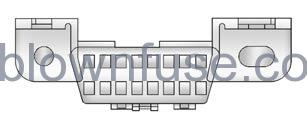 The DLC is under the instrument panel to the left of the steering wheel. Connecting devices that are not used to perform an Emissions Inspection/Maintenance test or to service the vehicle may affect vehicle operation. See Add-On Electrical Equipment 0 334. See your dealer if assistance is needed.
The DLC is under the instrument panel to the left of the steering wheel. Connecting devices that are not used to perform an Emissions Inspection/Maintenance test or to service the vehicle may affect vehicle operation. See Add-On Electrical Equipment 0 334. See your dealer if assistance is needed.
The vehicle may not pass inspection if:
- The light is on when the engine is running.
- The light does not come on when the ignition is on while the engine is off.
- Critical emission control systems have not been completely diagnosed. If this happens, the vehicle would not be ready for inspection and might require several days of routine driving before the system is ready for inspection. This can happen if the 12-volt battery has recently been replaced or run down, or if the vehicle has been recently serviced.
See your dealer if the vehicle will not pass or cannot be made ready for the test.
Brake System Warning Light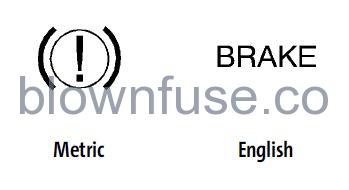
- This light should come on briefly when the vehicle is turned on. If it does not come on then, have it fixed so it will be ready to warn you if there is a problem.
- If the light comes on and stays on at start up, there is a brake problem. Has the brake system been inspected right away?
- If the light comes on while driving, pull off the road and stop carefully. If equipped with an electric brake boost, vehicle speed may be limited when the brake system warning light comes on. The brake pedal might be harder to push, or the brake pedal may go closer to the floor. It could take longer to stop. If the light is still on, have the vehicle towed for service. See Towing the Vehicle 0 406.
Warning
The brake system might not be working properly if the brake system warning light is on. Driving with the brake system warning light on can lead to a crash. If the light is still on after the vehicle has been pulled off the road and carefully stopped, have the vehicle towed for service.
Electric Parking Brake Light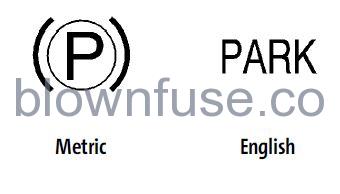
This light comes on when the parking brake is applied. If the light continues flashing after the parking brake is released, or while driving, there is a problem with the Electric Parking Brake system. A message may also display in the Driver Information Center (DIC). If the light does not come on, or remains flashing, see your dealer
Service Electric Parking Brake Light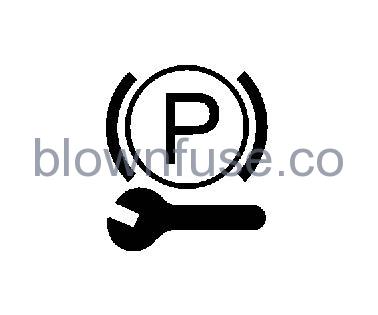
- This light may come on briefly when the vehicle is turned on. If it does not come on, have it fixed so it will be ready to warn if there is a problem.
- If this light stays on or comes on while driving, there is a problem with the Electric Parking Brake (EPB). Take the vehicle to a dealer as soon as possible. In addition to the parking brake, other safety functions that utilize the EPB may also be degraded. Instruments and Controls 117
- A message may also display in the Driver Information Center (DIC). See Electric Parking Brake 0 242
Antilock Brake System (ABS) Warning Light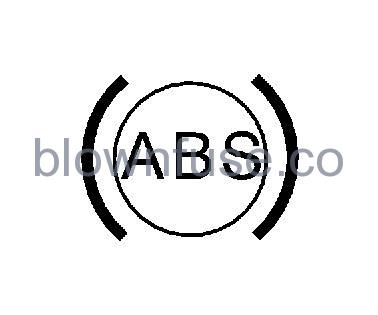
- This warning light should come on briefly when the vehicle is turned on. If the light does not come on, have it fixed so it will be ready to warn if there is a problem.
- Engagement of the 4WD front axle lock will disable ABS and illuminate the ABS warning light. The ABS warning light will turn off when the front axle lock is disengaged.
- If the light comes on while driving, safely stops as soon as it is possible and turn off the vehicle. Then turn on the vehicle again to reset the system.
- If the ABS warning light stays on or comes on again while driving, the vehicle needs service. A chime may also sound when the light stays on.
- If the ABS warning light is the only light on, the vehicle has regular brakes, but the ABS is not functioning.
- If both the ABS warning light and the brake system warning light are on, ABS is not functioning and there is a problem with the regular brakes. See your dealer for service.
- See Brake System Warning Light 0 116.
Four-Wheel-Drive Light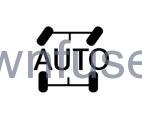
- If equipped, the four-wheel-drive light displays what mode the vehicle is in. The light will show each mode: 2WD, 4HI, AUTO (all transfer cases); 4LOW and N (two-speed transfer case only).
- The light will flash when a shift is in progress. Once the shift is complete the light will be steady.
- If the light turns amber, there may be a malfunction with the four-wheel-drive system. See your dealer.
- See Four-Wheel Drive 0 236.
Tow/Haul Mode Light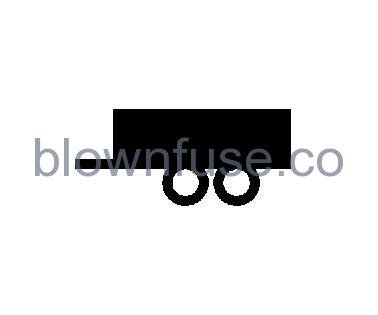
- For vehicles with the Tow/Haul Mode feature, this light comes on when the Tow/ Haul Mode has been activated.
- See Tow/Haul Mode 0 236.
Hill Descent Control Light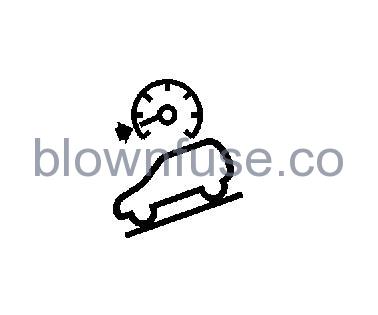
- If equipped, the Hill Descent Control light comes on when the system is ready for use. When the light flashes, the system is active
- See Hill Descent Control (HDC) 246.
Lane Keep Assist (LKA) Light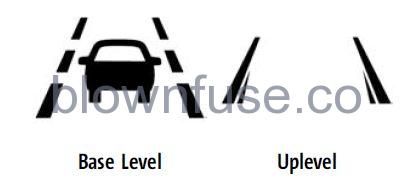
- If equipped, this light is white if LKA is turned on, but not ready to assist. This light is green if LKA is turned on and is ready to assist.
- LKA may assist by gently turning the steering wheel if the vehicle approaches a detected lane marking. The LKA light is amber when assisting.
- This light flashes amber as a Lane Departure Warning (LDW) alert, to indicate that the lane marking has been unintentionally crossed. If the system detects that the vehicle has been steered intentionally across a lane marker, the LDW may not be given. Do not expect the LDW to occur when intentionally crossing the lane marker. LKA will not assist or alert if the turn signal is active in the direction of lane departure, or if LKA detects that you are accelerating, braking, or actively steering. See Lane Keep Assist (LKA) 298.
Automatic Emergency Braking (AEB) Disabled Light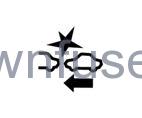
This indicator will display when AutomaticEmergency Braking or Front Pedestrian Braking has been turned off or is currently unavailable due to malfunction.
- See Automatic Emergency Braking (AEB) 292.
- See Front Pedestrian Braking (FPB) System 294.
Vehicle Ahead Indicator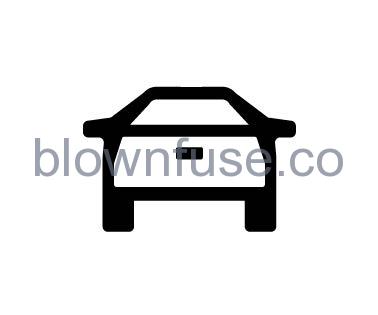
- If equipped, this indicator will display green when a vehicle is detected ahead and amber when you are following a vehicle ahead much too closely.
- See Forward Collision Alert (FCA) System 290.
Pedestrian Ahead Indicator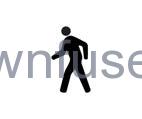
- If equipped, this indicator will display amber when a nearby pedestrian is detected in front of the vehicle.
- See Front Pedestrian Braking (FPB) System 294.
Traction Off Light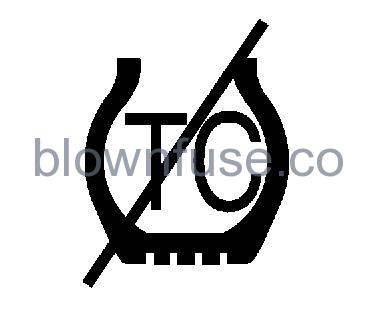
- This light comes on briefly when the vehicle is turned on. If it does not, have the vehicle serviced by your dealer. If the system is working normally, the indicator light then turns off.
- The traction off light comes on when the Traction Control System (TCS) has been turned off. If StabiliTrak/Electronic Stability Control (ESC) is turned off, TCS is also turned off. To turn TCS and ESC off and on,see Traction Control/Electronic Stability Control 243.
- If TCS is off, wheel spin is not limited unless necessary to help protect the driveline from damage. Adjust driving accordingly
StabiliTrak OFF Light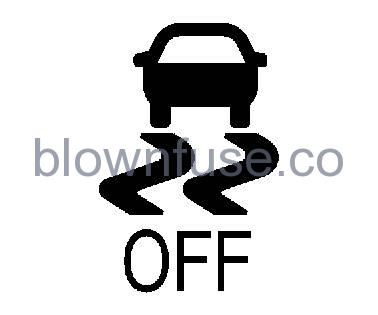
- This light comes on briefly when the vehicle is turned on. If the light does not come on, have the vehicle serviced by your dealer. If the system is working normally, the indicator light then turns off.
- This light comes on when the StabiliTrak/ Electronic Stability Control (ESC) system is turned off. If StabiliTrak/ESC is off, the Traction Control System (TCS) is also off. To turn ESC off and on, see Traction Control/ Electronic Stability Control 0 243.
- If ESC and TCS are off, the systems do not assist in controlling the vehicle. Adjust driving accordingly.
Traction Control System (TCS)/ StabiliTrak Light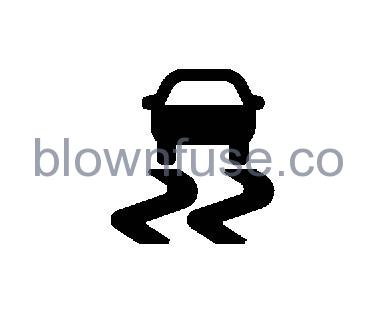
- This light comes on briefly when the vehicle is turned on.
- If the light does not come on, have the vehicle serviced by your dealer. If the system is working normally, the indicator light turns off.
- If the light is on and not flashing, the TCS and potentially the StabiliTrak/ESC system are not fully operational and may not assist in maintaining control. Adjust driving accordingly. If the condition persists, see your dealer as soon as possible. A Driver Information Center (DIC) message may display.
- The light flashes when the TCS and/or the StabiliTrak/ESC system is actively working. See Traction Control/Electronic Stability Control 243.
- The light may also flash when ABS is active. See Antilock Brake System (ABS) 241.
Trailer Sway Control Light (Uplevel Cluster)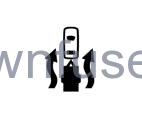
This light will flash when Trailer Sway Control is active. See Trailer Sway Control (TSC) 323.
Engine Coolant Temperature Warning Light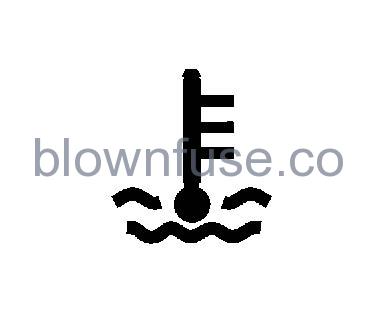
- This light comes on briefly while starting the vehicle.
- If it does not, have the vehicle serviced by your dealer. If the system is working normally the indicator light goes off.
- The engine coolant temperature warning light comes on when the engine has overheated.
- If this happens, pull over and turn off the engine as soon as possible. See Engine Overheating 352.
Caution
The engine coolant temperature warning light indicates that the vehicle has overheated. Driving with this light on can damage the engine and it may not be covered by the vehicle warranty. See Engine Overheating 352.
Driver Mode Control Light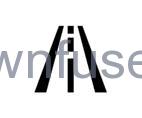
- This light comes on when Normal Mode is selected
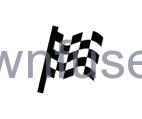
- This light comes on when Sport Mode is selected.
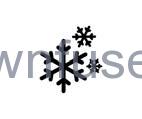
- This light comes on when Snow Mode is selected.
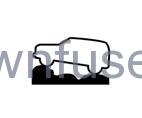
- This light comes on when Terrain Mode is selected

- This light comes on when Off-Road Mode is selected.
Tire Pressure Light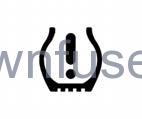
If equipped with the Tire Pressure Monitor System (TPMS), this light comes on briefly when the vehicle is started. It provides information about tire pressures and the TPMS. When the Light Is On Steady This indicates that one or more of the tires are significantly underinflated. A Driver Information Center (DIC) tire pressure message may also display. Stop as soon as possible, and inflate the tires to the pressure value shown on the Tire and Loading Information label. See Tire Pressure 0 381. When the Light Flashes First and Then Is On Steady If the light flashes for about a minute and then stays on, there may be a problem withthe TPMS. If the problem is not corrected, the light will come on every time the vehicle is started. See Tire Pressure Monitor Operation 382.
Engine Oil Pressure Light (Uplevel Cluster)
Caution
Lack of proper engine oil maintenance can damage the engine. Driving with the engine oil low can also damage the engine. The repairs would not be covered by the vehicle warranty. Check the oil level as soon as possible. Add oil if required, but if the oil level is within the operating range and the oil pressure is still low, have the vehicle serviced. Always follow the maintenance schedule for changing engine oil.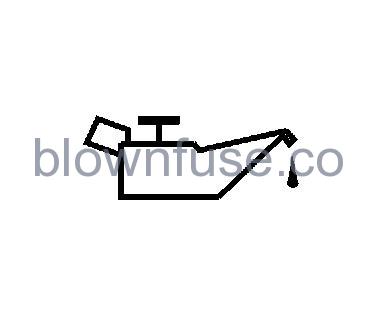
- This light should come on briefly as the engine is started. If it does not come on, have the vehicle serviced by your dealer.
- If the light comes on and stays on, it means that oil is not flowing through the engine properly. The vehicle could be low on oil and might have some other system problem. See your dealer
Low Fuel Warning Light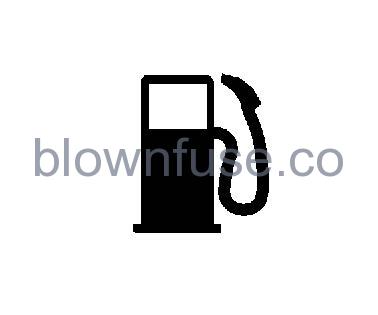
A Low Fuel Warning Light near the fuel gauge comes on briefly when the ignition is turned on as a check to show it is working. It also comes on when the fuel gauge indicator nears empty. The light turns off when fuel is added. If it does not, have the vehicle serviced.
Security Light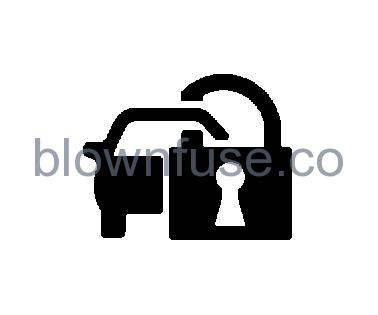
The security light should come on briefly as the engine is started. If it does not come on, have the vehicle serviced by your dealer. If the system is working normally, the indicator light turns off. If the light stays on and the engine does not start, there could be a problem with the theft-deterrent system. See Immobilizer Operation 29.
High-Beam On Light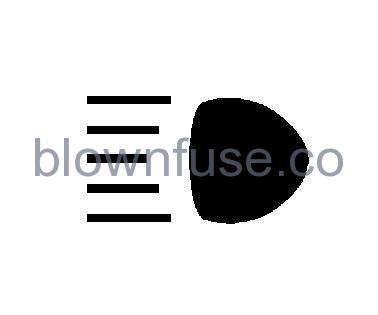
This light comes on when the high-beam headlamps are in use. See Headlamp High/ Low-Beam Changer 142.
IntelliBeam Light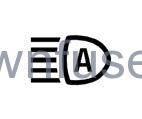
This light comes on when the IntelliBeam system if equipped, is enabled. See Exterior Lamp Controls 140.
Front Fog Lamp Light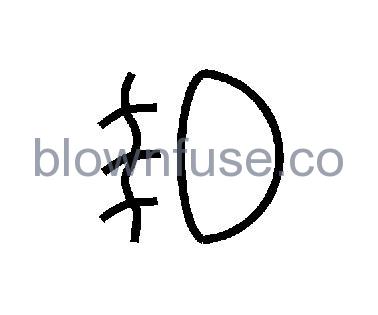
For vehicles with fog lamps, this light comes on when the fog lamps are turned on. The light goes out when the fog lamps are turned off. See Fog Lamps 144.
Lamps On Reminder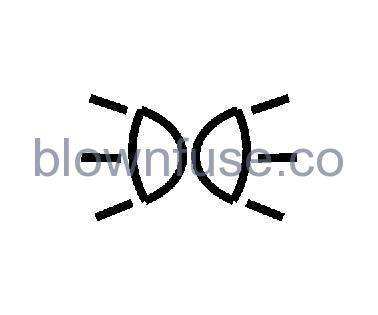
This light comes on when the exterior lamps are in use, except when only the DaytimeRunning Lamps (DRL) are active. See Exterior Lamp Controls 140
Cruise Control Light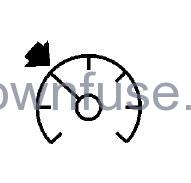
The cruise control light is white when the cruise control is on and ready, and turns green when the cruise control is set and active. See Cruise Control 251.
Adaptive Cruise Control Light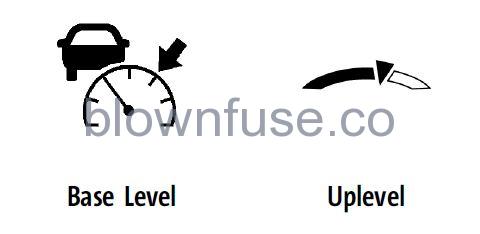
This light is white when the Adaptive Cruise Control (ACC, if equipped) is on and ready, and turns green when the ACC is set and active.
Curve Speed Control Light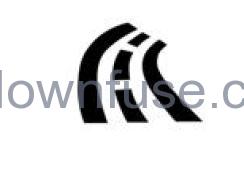
- If equipped, this light may illuminate green when ACC is actively controlling the vehicle speed and detects a sharp curve on the road ahead.
- ACC automatically slows the vehicle down while navigating the curve and may increase speed out of the curve, but will not exceed the set speed. See Adaptive Cruise Control (Camera) 0 253
Super Cruise Light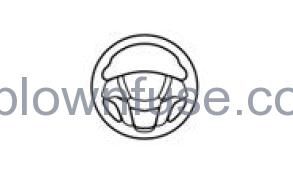
If equipped, this light comes on to show the status of Super Cruise. See Super Cruise 264.
Door Ajar Light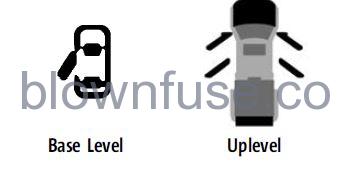
This light comes on when a door is open or not securely latched. Before driving, check that all doors are properly closed.
